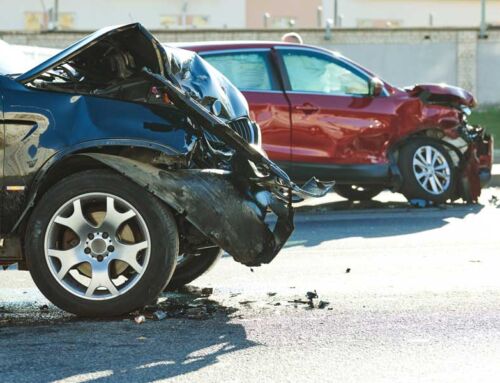Updated: 11/7/2024
Navigating wet weather can present unique challenges for drivers, often increasing the likelihood of accidents and the need for professional repairs. At Downtown Autobody, we understand the importance of safe driving, especially in unpredictable weather conditions.
This article provides valuable insights on driving safely in wet weather, covering key topics from handling vehicle control to understanding the essentials of auto body repair services in case of an accident. We’re here to help you stay safe on the road and make informed decisions should an unexpected repair need arise.
| Topic | Key Points |
|---|---|
| Preparing for Wet Weather Driving | Importance of vehicle maintenance, tire traction, and clear visibility |
| Driving Techniques in Wet Conditions | Best practices for speed control, braking, and avoiding hydroplaning |
| Handling Emergency Situations | What to do in case of skidding or loss of control |
| Auto Body Repair for Post-Accident Care | Overview of collision repair options, from dent removal to OEM auto parts |
When it comes to driving in rain, keeping these safety tips in mind can make all the difference in staying safe on the road. Let’s start by exploring how to properly prepare your vehicle for wet weather conditions.
Preparing for Wet Weather Driving
Wet weather demands special attention to vehicle maintenance to ensure optimal safety. Taking steps to prepare your car can prevent potential accidents and enhance vehicle control. One of the key factors to monitor is tire traction. Tire treads should be deep enough to grip the wet road, minimizing the risk of hydroplaning, which occurs when a layer of water causes a vehicle to slide uncontrollably. Checking tire pressure and tread depth is essential before driving in wet weather.
Additionally, visibility is crucial. Make sure windshield wipers are fully functional and replace them if they leave streaks, as clear visibility is essential in rain. Headlights and taillights should also be checked to ensure they are working, as they improve visibility and help other drivers see your vehicle.
Consider these preparation steps for wet weather driving:
- Inspect tires for adequate tread depth and pressure.
- Check windshield wipers for proper operation and visibility.
- Ensure all lights are functional, especially headlights and taillights.
- Use a water-repellent coating on windows if possible.
With your vehicle properly prepared, you’ll be better equipped to face wet weather driving. In the next section, we’ll cover specific driving techniques to help you stay safe in rainy conditions.
Driving Techniques in Wet Conditions
Driving in wet weather requires adjusting your approach to handling the car, starting with speed control. Reducing speed on wet roads is critical because high speeds increase the risk of hydroplaning and reduce the effectiveness of your vehicle’s brakes. Always maintain a safe following distance, as stopping distances increase on slick surfaces. Applying brakes gently and early can help prevent skidding.
Another key tip is to avoid sudden movements. Sudden braking or quick turns can lead to loss of control. Instead, make gradual changes in direction or speed. It’s also advisable to keep both hands firmly on the steering wheel, particularly in heavy rain, to maintain better control of the vehicle.
For enhanced safety:
- Slow down to reduce the risk of hydroplaning.
- Maintain extra following distance for longer braking time.
- Avoid sudden movements like sharp braking or turning.
- Keep both hands on the steering wheel for control.
By following these tips, you can drive more confidently even in challenging weather conditions. Next, we’ll discuss how to respond in case of emergencies, such as skidding or losing control.
Handling Emergency Situations
Even with precautions, emergencies can still occur. Knowing how to respond when your vehicle begins to skid or hydroplane is essential. If you experience hydroplaning, the first step is to remain calm and avoid braking immediately, as this can worsen the skid. Instead, ease off the gas pedal and steer gently in the direction you want the vehicle to go.
In cases where you lose control, it’s important to remember not to overcorrect. Oversteering in response to skidding can lead to further instability. If braking is necessary, apply brakes gently and avoid locking the wheels. Anti-lock braking systems (ABS) are especially helpful in these situations, so if your car is equipped with ABS, press firmly on the brake pedal without pumping it.
Key emergency tips:
- Ease off the gas and avoid sudden braking during a skid.
- Steer gently to regain control.
- Apply brakes lightly if necessary, avoiding wheel lock-up.
- Rely on ABS if your vehicle is equipped with it.
Understanding these response techniques can prevent further accidents and help you stay safe. In the next section, we’ll look at what to do if a repair is necessary after an incident.
Auto Body Repair for Post-Accident Care
Should an accident occur, knowing the right steps for vehicle repair can ease the recovery process. Collision repair covers a range of services, from fixing minor dents to more extensive frame repair. When choosing a repair shop, look for I-CAR Gold Class certified technicians to ensure that repairs meet industry standards. Downtown Autobody’s certified technicians provide expert services, including OEM auto parts and aftermarket parts for high-quality, durable repairs.
If your vehicle needs painting, consider shops with dedicated auto paint booths, as these controlled environments produce even, high-quality finishes. Services like auto scratch repair, panel replacement, and car rust repair ensure your vehicle is both safe and visually restored.
Our collision services include:
- Dent and scratch repair for minor damages.
- Frame and panel replacement for structural repairs.
- Professional automotive painting in our state-of-the-art paint booth.
- Use of OEM or high-quality aftermarket parts for longevity.
Being informed about these services can make your repair experience more efficient and satisfactory. In our final section, we’ll wrap up with essential takeaways from this article.
Final Thoughts
Driving safely in wet weather requires preparation, caution, and knowledge of emergency handling techniques. From ensuring your vehicle is equipped for rainy conditions to employing safe driving practices, every step plays a part in preventing accidents. If an accident does occur, choosing a certified auto body shop for repairs ensures quality and peace of mind.
For more detailed information on our collision repair services or to get assistance with your repair needs, don’t hesitate to contact Downtown Autobody. Additionally, we offer free loaner vehicles so you can stay on the road while your car is being serviced.





